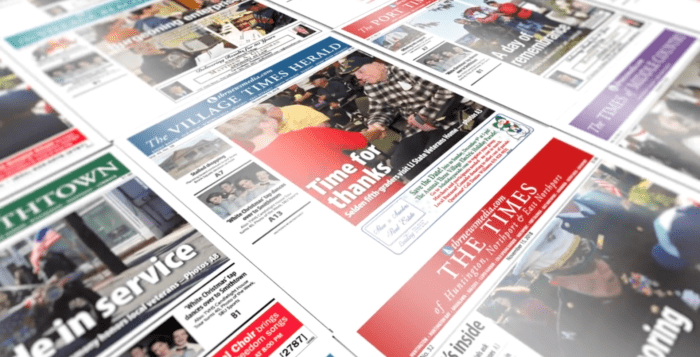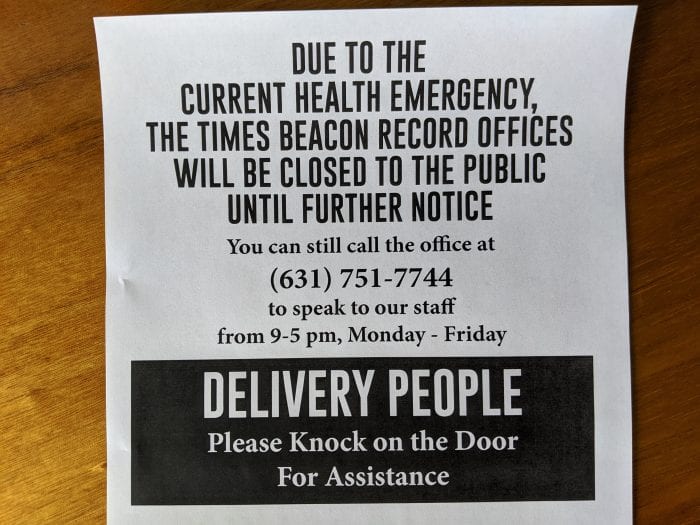By Leah S. Dunaief

Feeling overwhelmed by all the news of the past few days?
The latest numbers for COVID victims, the mask debates, the possibility of another COVID variant emerging, the Russians military massed around the Ukraine, NATO and its cohesion and response, the Islamic State re-emerging in Afghanistan, North Korean test missiles, escalating inflation, climate change’s latest effects, how the USA is severely divided, the inactions of Congress on voting regulations, death in the NYC subways, and even whether Brady will finally retire, those items and more could do that to you.
“A newspaper is a mirror. Each day it reflects some segment of the world’s activities.”
I am quoting Arthur Ochs Sulzberger, former publisher of The New York Times, but the metaphor has been offered by many others. We in the news business capture the events of the moment and provide contemporaneous information, largely without interpretation, for historians to analyze and history voyeurs like me to look back and see who was making news then.
So, in an effort to escape the daily barrage, I checked to see what was happening 100 years ago, at the beginning of 1922. I used as my source front pages from The NYT, compiled by them in a book called, “Page One.” Here is what I found.
“Pope Benedict XV Passes Away Early This Morning; Lingers Hours After World Gets Report of Death; Tributes Paid to the Pontiff by Men of All Religions,” reads the three-tiered, all capitalized headline of the Sunday, Jan. 22, 1922, issue. Other articles on the front page cover different aspects of the main story, including “Men of All Faiths Eulogize the Pope, Protestants Unite with Catholics in Praise of his Great Service to Humanity, and World is Misled by Premature Report of Death; Berlin Started Rumor, Cardinal’s Aide Spread It.” Immediately notable about the headlines from today’s perspective is, of course, the mention only of men. Women had gotten the right to vote with the passage of the 19th Amendment to the Constitution less than two years earlier. I guess they had not registered on the country’s radar yet as part of the general population. Also on the page is a report that Lloyd George, Britain’s prime minister, looked to the coming Genoa Conference as setting the stage for the world’s path to peace and recuperation, but only if the United States attends and actively participates. He was clearly and correctly concerned about our move toward isolation after WWI.
Also mentioned in another article was the storm of protest that ensued in France when General Pétain, a military hero of WWI, was appointed to the cabinet of Premier Poincare as inspector general of the Army. The fear was that his influence on the government’s future direction would be too militaristic. Petain, we know from our vantage point, went on to become the chief of state of infamous Vichy, France, during WWII. Ireland too made the front page in a story of mutual consent by Michael Collins, head of the Irish Provisional Government and Sir James Craig, premier of Ulster, abut boundaries between North and South that predicted ultimate agreement.
In the issue of Feb. 22, 1922, the three-tiered headline featured the fate of the Army dirigible. “Giant Army Dirigible Wrecked; 34 Dead. 11 are Saved; Victims Perish When Roma Bursts into Flames After Fall; Collapse of Rudder Causes Tragedy On Short Trial Flight.” Roma, 410 feet long, was built by Italy for the United States. The subheads go on to explain, “Hits High Tension Wires, Hydrogen Ignites in Norfolk Flight and Flames Sweep Huge Structure. Few Saved by Leaping, One Lieutenant Breaks Neck in Jump—Other Victims Buried in Wreckage, Rescuers Baffled by Intense Heat — Commander Mabry Stuck to Wheel Till Death Came.” This was the greatest disaster that ever befell American military aeronautics, according to the newspaper.
In going back and reading these news articles, we can see how the stage was set for so many future events. Especially interesting to me is to learn of the roles of individual players in what would become world history.









